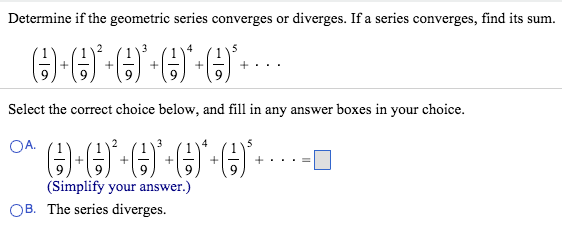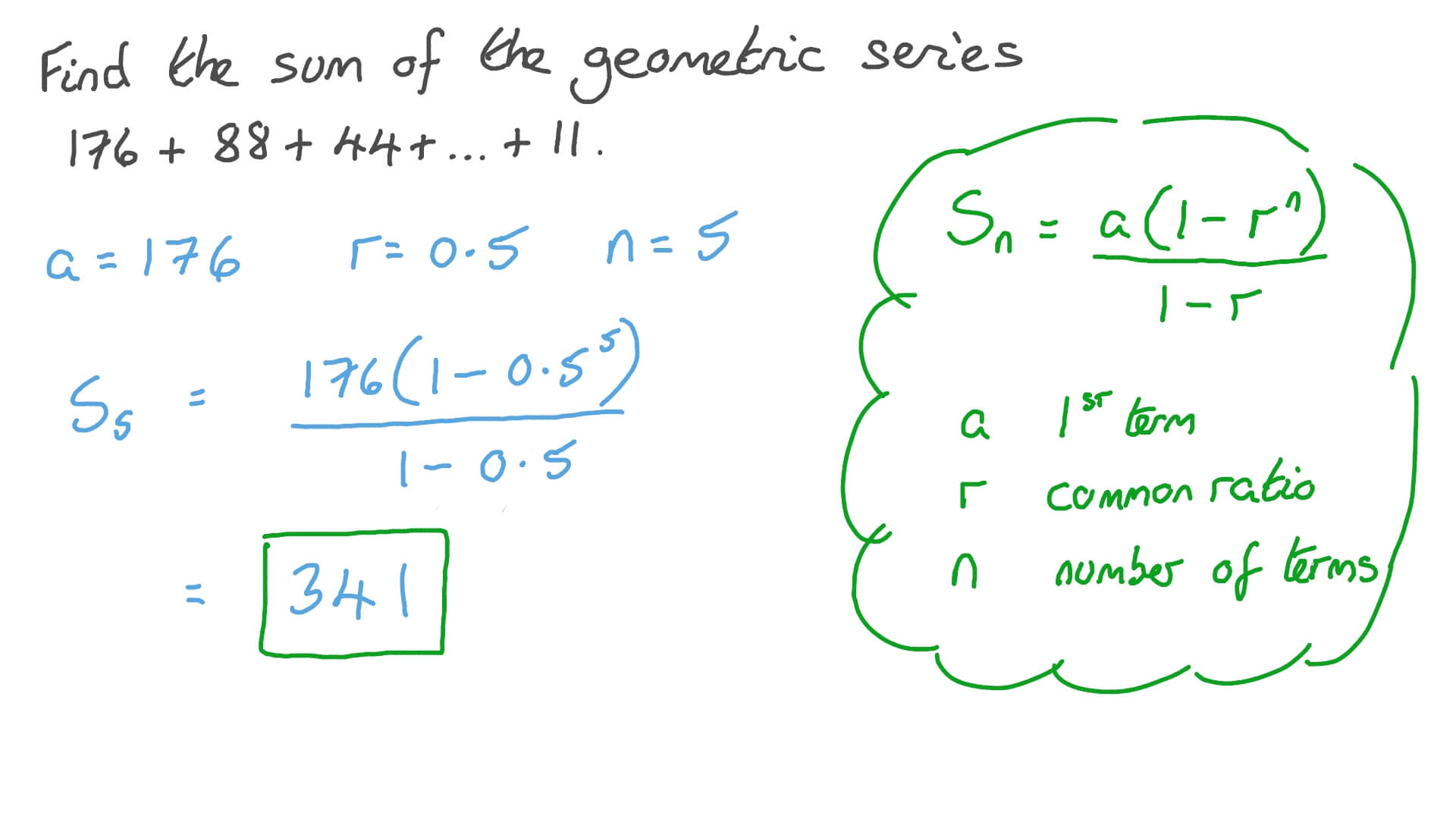

We can plug those values into our formula to find that:Ī geometric sequence is a sequence in which each successive term is obtained by multiplying the previous term by a fixed non-zero number, called the common ratio.įor example, the sequence 2, 6, 18, 54,… is a geometric sequence with common ratio 3.
SUM OF GEOMETRIC SEQUENCE CONVERGE SERIES
Where S is the sum of the series, a? is the first term in the series, r is the common ratio, and n is the number of terms in the series.įor example, let’s say we have a geometric series with a first term of 2 (a? = 2), a common ratio of 3 (r = 3), and 4 terms in total (n = 4). The sum of a geometric series is found using this formula: For example, if the common ratio is 2, then the first term would be multiplied by 2 to get the second term, the second term would be multiplied by 2 to get the third term, and so on. The common ratio is the number that each term in the series is multiplied by to get the next term. To find the sum of a geometric series, you need to know the common ratio between terms and the number of terms in the series.
SUM OF GEOMETRIC SEQUENCE CONVERGE HOW TO
The general form of a geometric sequence is:Ī, ar, ar^2, …, where a is the first term in the sequence and r is the common ratio How to Find the Sum of a Geometric Series For example, if the first term in a geometric sequence is 2 and the common ratio is 3, then the second term would be 6 (2×3), the third term would be 18 (6×3), and so on. That is, the first term in the sequence is given, and each subsequent term is found by multiplying the previous one by a common ratio.

Geometric sequences are defined recursively. Now let’s rearrange our terms to see if condition ii is satisfied: What is a Geometric Sequence? Therefore, the sequence of partial sums will approach some finite limit as n goes toward infinity (condition i). The first two conditions are fairly easy to grasp but let’s look at each one in turn with respect to our example above.Īs n goes to infinity, each successive term in our example becomes smaller than the one before it. (iii) The limit must be equal to the sum of the terms in the original sequence. (ii) This limit must be independent of the particular arrangement of terms in the original sequence. (i) The sequence of partial sums must approach some finite limit as n goes to infinity. In order for a series to converge, three conditions must be met: This limit is called the sum of the series and is represented by: The above series converges because it approaches a finite limit as n goes to infinity. In other words, it is the mathematical way of adding numbers in succession. A series is the sum of the terms of a sequence. To understand the Convergence of a Geometric Series, we must first understand what a series is. S = a/(1-r) Convergence of Geometric Series The sum of an infinite geometric series is given by the following formula: R is the common ratio between successive terms of the geometric series. Geometric series are represented by the following formula:Ī is the first term of the geometric series Geometric Series FormulaĪ geometric series is a mathematical series with a common ratio between successive terms. A geometric series converges if the absolute value of the common ratio is less than one and diverges if the common ratio is greater than one. In a geometric series, each term after the first is equal to the previous term multiplied by a constant or common ratio. What is a Geometric Series?Ī geometric series is a mathematical series with a common ratio between successive terms. By the end of this post, you should have a good understanding of what a geometric series is and how to use the formula. We will also look at some examples of how to use the formula. In this blog post, we will explore the geometric series formula and some key definitions. Geometric series are one of the simplest examples of infinite series with finite sums.

For example, the sequence 2, 4, 8, 16, 32,… is a geometric series with common ratio 2. In mathematics, a geometric series is a series with a constant ratio between successive terms.


 0 kommentar(er)
0 kommentar(er)
